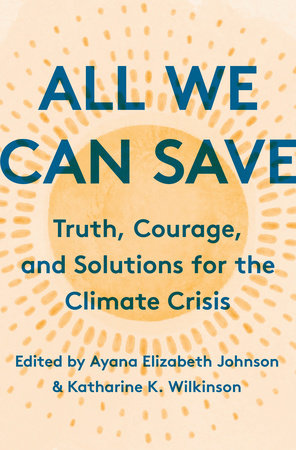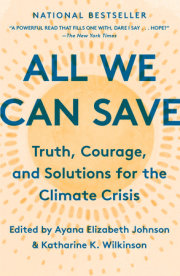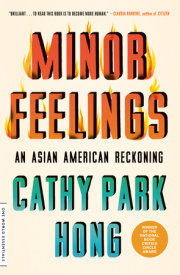BeginAyana Elizabeth Johnson and Katharine K. WilkinsonEunice Newton Foote rarely gets the credit she’s due. In 1856 Foote theorized that changes in carbon dioxide in the atmosphere could affect the Earth’s temperature. She was the first woman in climate science, but history overlooked her until just a few years ago.
Foote arrived at her breakthrough idea through experimentation. With an air pump, two glass cylinders, and four thermometers, she tested the impact of “carbonic acid gas” (the term for carbon dioxide in her day) against “common air.” When placed in the sun, she found the cylinder with carbon dioxide trapped more heat and stayed hot longer.
From a simple experiment, she drew a profound conclusion: “An atmosphere of that gas would give to our earth a high temperature; and if as some suppose, at one period of its history the air had mixed with it a larger proportion than at present, an increased temperature . . . must have necessarily resulted.” In other words, she connected the dots between carbon dioxide and planetary warming, and she did it more than 160 years ago.
Foote’s paper, “Circumstances Affecting the Heat of Sun’s Rays,” was presented in August 1856 at a meeting of the American Association for the Advancement of Science and then published. For unknown reasons it was read aloud by Joseph Henry, secretary of the Smithsonian, rather than by Foote herself. That was three years before Irish physicist John Tyndall published his own more detailed work on heat-trapping gases—work typically credited as the foundation of climate science.
Did Tyndall know about Foote’s research? It’s unclear—though he did have a paper on color blindness in the same 1856 issue of
The American Journal of Science and Arts as hers. In any case, we have to wonder if Eunice Newton Foote ever found herself remarking, as so many women have: “I literally just said that, dude.”
Foote wasn’t only a scientist. She was involved in the early movement for women’s rights too. Her name appears on the list of signatories to the 1848 Seneca Falls “Declaration of Sentiments”—a manifesto created during the first women’s rights convention in the United States—right below suffragist Elizabeth Cady Stanton. Foote’s husband, Elisha, and abolitionist-philosopher Frederick Douglass also signed on, under “gentlemen.” (Of note: John Tyndall opposed women’s suffrage.)
Foote, it seems, was a climate feminist.
The same patriarchal power structure that oppresses and exploits girls, women, and nonbinary people (and constricts and contorts boys and men) also wreaks destruction on the natural world. Dominance, supremacy, violence, extraction, egotism, greed, ruthless competition—these hallmarks of patriarchy fuel the climate crisis just as surely as they do inequality, colluding with racism along the way. Patriarchy silences, breeds contempt, fuels destructive capitalism, and plays a zero-sum game. Its harms are chronic, cumulative, and fundamentally planetary.
And these structures are being actively upended. The People’s Climate March and the Women’s March. School strikes for climate and the #MeToo movement. Rebellions against extinction and declarations that time’s up. More than concurrent, these phenomena are connected by the systems they seek to transform and the values that guide them.
The climate crisis is not gender neutral. Climate change is a powerful “threat multiplier,” making existing vulnerabilities and injustices worse. Especially under conditions of poverty, women and girls face greater risk of displacement or death from extreme weather disasters. Early marriage and sex work—sometimes last-resort survival strategies—have been tied to droughts and floods. There is growing proof of the link between climate change and gender-based violence, including sexual assault, domestic abuse, and forced prostitution. Tasks core to survival, such as collecting water and wood or growing food, fall on female shoulders in many cultures. These are already challenging and time-consuming activities; climate change can deepen the burden, and with it struggles for health, education, and financial security.
The list of harmful impacts caused by our rapidly changing climate goes long and it goes wide, especially for girls and women of color, those in the Global South, and those who are rural or Indigenous. In very real ways, the climate crisis thwarts the rights and opportunities of women and girls, as well as nonbinary people. These realities make gender-responsive strategies for climate resilience and adaptation critical. And they mean that bold climate action is critical to our aspirations for gender equality and justice.
However, the story does not, and must not, end with the label “victim.” When you’re close to the problem, you’re necessarily close to the solutions.
All around the world, women and girls are making enormous contributions to climate action: conducting research, cultivating solutions, creating campaign strategy, curating art exhibitions, crafting policy, composing literary works, charging forth in collective action, and more. Look around and you will see on the rise climate leadership that is more characteristically
feminine and more faithfully
feminist, rooted in compassion, connection, creativity, and collaboration. There is a renaissance blooming in the climate movement, and it has a few important characteristics.
First, there is a clear focus on making change rather than being in charge. We see women and girls moving beyond ego, competition, and control, which are rampant in the climate space (as elsewhere) and impede good work. We see joyful following where wise leadership appears, joining instead of duplicating, giving one another credit, sharing resources, passing the mic, and celebrating one another’s successes. It is shine theory in practice.
Second, there is a commitment to responding to the climate crisis in ways that
heal systemic injustices rather than deepen them. We see women and girls centering justice, inclusion, and frontline communities, recognizing that we can address near-term needs and long-term aims at the same time, and more effectively. Equity is not secondary to survival, as some suggest; it is survival.
Third, there is an appreciation for heart-centered, not just head-centered, leadership. We see women and girls bringing their whole selves to this movement—fear, grief, fiery courage, wracking uncertainty, all of it—and doing the inner work that often precedes effecting change. The climate crisis has inescapable psychological and spiritual dimensions. What’s so powerful about integrating head and heart: It’s where scientific rigor and moral clarity, analysis and empathy, strategy and imagination meet. It is what allows us to sustain bold aspirations and insist upon the action that’s necessary rather than what’s expedient or “practical.”
Fourth, and perhaps most important, there is a recognition that building community is a requisite foundation for building a better world. We see women and girls engaging in deeply relational, collaborative, and supportive ways—taking the necessary time, making the necessary space, investing in the weft and weave between us. It is clear that we are in this together, that our fates are intertwined. And in many ways, success requires building the largest, strongest team possible.
While women and girls are undeniably vital voices and agents of change for this planet, we are too often missing or even barred from the proverbial table. Women remain underrepresented in government, business, engineering, and finance; in executive leadership of environmental organizations, United Nations climate negotiations, and media coverage of the crisis; and in the legal systems that create and uphold change. Girls and women leading on climate receive insufficient financial backing and too little credit. Again, unsurprisingly, this marginalization is especially true for women of the Global South, rural women, Indigenous women, and women of color. The dominant public voices and empowered “deciders” on the climate crisis continue to be White men.
More than a problem of bias, suppressing the climate leadership and participation of women and girls—half the world’s brainpower and change-making might—sets us up for failure. Research shows that women have an edge over men when it comes to the planet: caring about the environment and climate change and acting on that care; aversion to taking on outsized risk or imposing it on others (something data indicates White men are particularly inclined to do). This edge carries into politics and policy making. Female legislators more strongly support environmental laws—and stricter laws at that. When parliaments have greater representation of women, they are more likely to ratify environmental treaties. When women participate equally with men, climate policy interventions are more effective. At a national level, higher political and social status for women correlates with lower carbon emissions and greater creation of protected land areas. It’s not about
only women but about making sure women are included and leading at all levels.
Copyright © 2020 by Ayana Elizabeth Johnson. All rights reserved. No part of this excerpt may be reproduced or reprinted without permission in writing from the publisher.


















